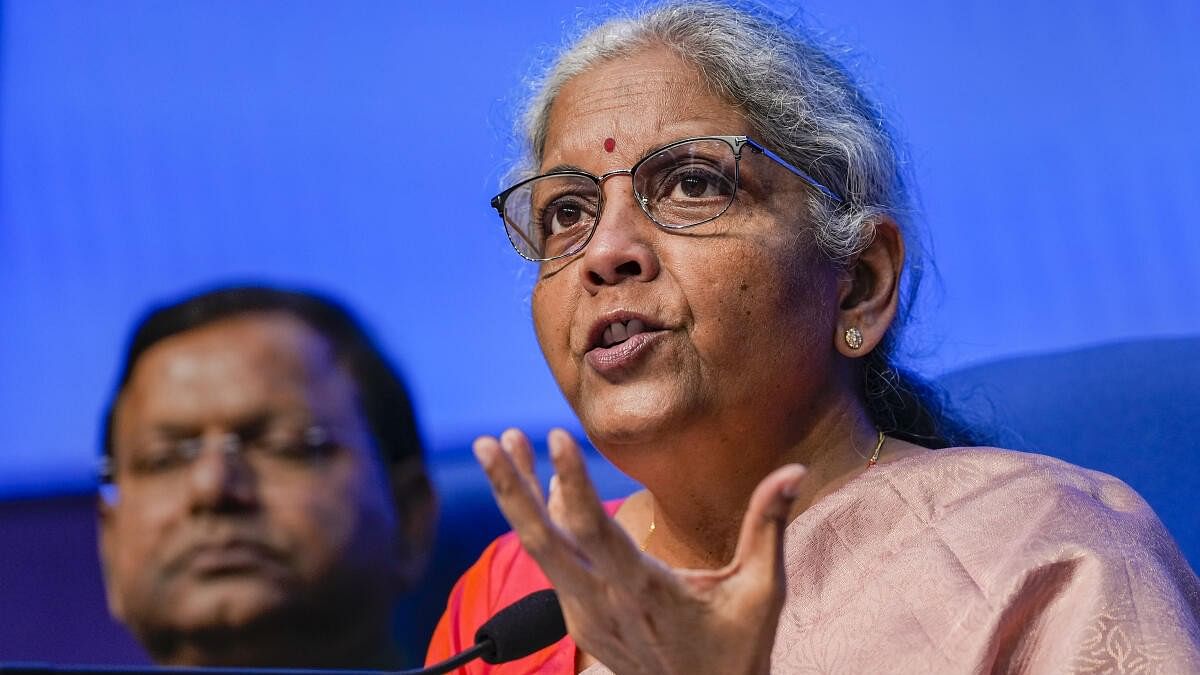
Union Finance Minister Nirmala Sitharaman.
Credit: PTI Photo
While the Interim Budget presented by the Union Finance Minister (FM), Nirmala Sitharaman, left the income tax (I-T) slabs untouched, a relief offered on outstanding tax demands caught many by surprise. She was quick to point out that 1 core taxpayers will benefit from it. Given that the waiver is not a blanket one, let’s try to understand its nuances, the government’s compulsion and what is yet to be unravelled.
What is the proposed relief?
The FM said that small outstanding disputed tax amounting to Rs 25,000 (per fiscal year) would be waived up to the year 2009-10, pursuant to that disputed tax demands to the tune of Rs 10,000 (per fiscal year) will be withdrawn for the years between 2010-11 and 2014-15.
As per Sanjay Malhotra, Revenue Secretary, Department of Revenue, Ministry of Finance, there are over 2.68 crore disputed demands for I-T, wealth tax and gift tax amounting to Rs 35 lakh crore pending before various legal forums. Out of these, 2.1 crores have a demand of up to Rs 25,000. While these include demands dating back to 1962, Malhotra shared that about 58 lakh demands were eligible for the relief up to the financial year 2009-10. The waiver proposed for the period 2010-11 to 2014-15 involves another 53 lakh demands.
Some clarifications
So what happens to people fighting tax demands for multiple financial years? Is there a cap on the relief they can access? The Revenue Secretary stated that the cap has been set at Rs 1 lakh per individual.
That said, what happens to the interest applied on these demands? That law levies a monthly 1% interest on such outstanding tax demands. Will the relief extend to the interest due, as well? Yes, it will be. In a post-budget interaction, Nitin Gupta, Chairman, Central Board of Direct Taxation (CBDT) said that only the base figure of Rs. 25,000 and Rs. 10,000 would be the deciding factor and not the interest amount riding on the basic demand over the years. Further, he also stated that a ‘Speaking Order’ explaining the practical details of the relief will be issued.
How will the waiver process be initiated?
In the post-budget interaction, the CBDT chairman has stated that the I-T department will extinguish those demands from its records. The taxpayer does not have to do anything. The department will not get in touch with the taxpayers at all. However, the action will be put on the e-filing portal, which can be verified by the taxpayer on logging in. If there are any issues like rectification, where an appeal effect has not been given, pending refund, then the department will resolve it. Since there is no specific amendment proposed in the Finance Bill, 2024, a detailed circular or instructions are being expected.
What propelled the move?
On the face of it, three compulsions come to mind. For one, the last Comptroller and Auditor General’s report on direct taxes, for the year ended March 31, 2021, tabled in the Parliament in December 2022, highlights certain issues such as taxpayers not being traceable, demand being stayed by courts, tribunals or I-T authorities, mismatch of advance tax/ tax deducted at source / tax collected at source, no assets or inadequate assets - all of which are making it difficult to recover the demands.
Secondly, taxpayers have been spooked by demand notices to settle very old tax demands or proposed to adjust current tax refunds against old dues that go back to 2003. Thirdly, general elections-related restrictions and recent direct tax buoyancy may have prompted it to explore this route and extend relief to more than one crore small and mid-level income taxpayers. The expected revenue forgone will be Rs. 3,500 crore.
The relief will be largely helpful to those taxpayers who have mismatches in taxes paid but the department or taxpayer himself does not have the records to prove it. It will speed up their pending tax refunds clogged by old tax demands. Nevertheless, the latest proposal is easier compared to the department’s earlier direct tax dispute resolution schemes, where the taxpayers were subject to the cumbersome process of filing a detailed application and follow-ups, with the reliefs delayed on several occasions. The latest relief also helps the department in many ways, to clean its books, reduce tax disputes, save from follow-up/harassing the small, mid-level and senior citizen taxpayers and improve taxpayers’ service.
(The writer is Founder and CEO, Shree Tax Chambers)